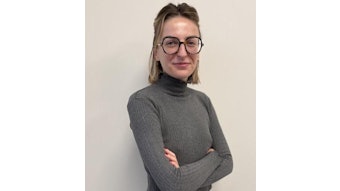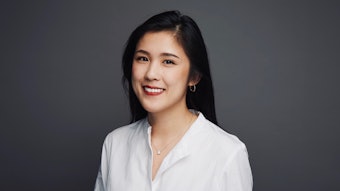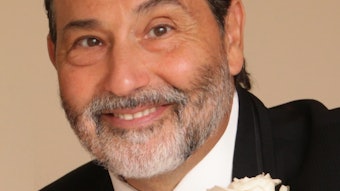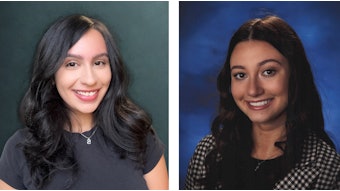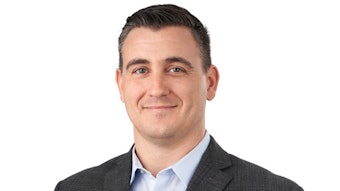“Be crazy when you imagine new products,” Philippe Auderset, Ph.D., IFSCC and SWISS SCC president advises novice chemists. “Crazy ideas are the seeds from which new ideas grow.” Though, with some 29 years in the industry, he’s certainly got more than just crazy ideas up his sleeve.
With sights set on process optimization, epigenetics and a deeper understanding of the consumer, his vision for the industry’s future is, as they say, “so crazy it just might work.” C&T interviewed this successful industry leader to teach us more.
C&T: How did you get started in the cosmetics industry?
PA: It all started in 1987, when after earning my Ph.D. in organic chemistry, I became head of the analytic department at Mibelle Cosmetics. This was a great experience and I learned a lot about cosmetic products and technical packaging development.
After that, I became head of quality control for two years, then in 1992 I was appointed head of applied development at Mibelle. This department´s responsibility was to develop specialty products like oral care, sun care and baby care—products developed and tested with a higher emphasis on efficacy and safety.
In 1998, I changed companies and became head of research and development at Cobrossa, the manufacturer of the brand "Just," which is sold via direct sales. We made most types of cosmetic products except decorative cosmetics.
C&T: Who were some of your mentors?
PA: During my time at Mibelle, Kurt Schweikert, later one of the owners at Induchem, helped me to understand the cosmetic industry and make connections in both industry and the Federal Office of Public Health (FOPH). At FOPH, I had the opportunity to participate in two regulatory working groups for cosmetic products.
Regarding the product development process, I learned a lot from Jo Wunderling, a senior developer at Mibelle for more than 25 years. In the field of sun care products, I have to thank Hansueli Gonzenbach.
Nanotechnology could be a very powerful tool but it must be more thoroughly investigated
C&T: What are some of your greatest achievements?
PA: For me, it was always important to have a structured way to work in development. I disliked seeing colleges spending time in the laboratory writing new formulations and protocols. I’ve always tried to reduce this work to a minimum so I could have more time to be creative.
At Cobrossa, I managed to change this routine by developing software with an innovative software developer. Our idea was to create a tool to document every process during product development. We wanted the capability to check the legal conformity of a formulation at an early stage, to automatically create INCI lists or cost calculations, and to see the status of a project at any time. Last but not least, we wanted to produce safety assessments and product information files.
To achieve all this, we learned it was essential to have quality data about ingredients. Therefore, we established a database including data and documents that provided us with information such as INCI names and regulatory data from many qualified sources. Optimizing our processes and being highly efficient was not only a successful achievement itself, but also a joyful experience.
What we developed in 1998 became standard software one year later. Nowadays, it is well-known in the cosmetic industries of Switzerland and Germany as an all-in-one formulation and regulatory affairs software named “The Druid.”
Another great milestone for me was the development of a men’s cosmetic line for Roger Federer in 2002. I had many meetings with him and later his wife, Mirka, to define the textures and fragrance of an eau de toilette, an aftershave balm, a deodorant and a shower gel. It was a great pleasure to work with him. The products were launched in Switzerland in 2003 after his first Wimbledon victory.
C&T: Tell us one major “lesson learned” in your career—and the story behind it.
PA: To be sure I’ve really understood something, I have to teach or explain it to somebody else. And besides my industry work, I taught organic chemistry for 10 years at a technical University in Switzerland. During this time, I realized that knowing something doesn’t necessarily mean that you fully understand it. It wasn’t until I taught organic chemistry to students that I felt I had internalized all the book knowledge.
C&T: What are some of the biggest challenges the industry has overcome?
PA: Working with the change in available ingredients; in other words doing more with fewer options. This has already been, and will continue to be, a challenge for the cosmetic industry, especially in the European market.
Customers decide if a product will be a success or not.
C&T: What technologies/innovations have revolutionized personal care?
PA: Liposome technologies gave us new opportunities for the formulation of products and opened up new systems to deliver active ingredients. Nanotechnology could be a very powerful tool, too, but it must be more thoroughly investigated. Also, the improvement of existing methods and the discovery of new ones to determine the efficacy and safety of ingredients and products will provide new ways to design innovative products.
C&T: If you could give advice to novice formulators, or to the industry as a whole, what would it be?
PA: Feel free to be crazy when you imagine new products. Crazy ideas are the seeds from which new products will grow. Don’t filter out any crazy ideas you come up with.
C&T: What do you enjoy most about being in this industry? What do you find the most frustrating?
PA: I like the way we can create new products and new illusions. I like to make very powerful and effective products. My only frustration with our industry is we don’t deal directly with issues when they arise. Instead of listening carefully to our customers or regulators to understand their concerns, rather than dealing with them directly, we react, for example, by eliminating an ingredient. I believe our industry and customers would be better served through dialog and education instead of avoiding the discussion.
C&T: What vision do you have for the IFSCC, as the new President?
PA: I think 2016 is a year for taking a fresh look at the operations of the IFSCC. I have been president of the Swiss Society of Cosmetic Chemists (SWISS SCC) for 16 years. I realize from experience that association work is different from industry work.
We’ve had many recent changes in the IFSCC Praesidium. These include a new honorary secretary, a new treasurer and new chairs of the education and publication committees. Together with the incoming Italian member on the presidential track, this makes five new people on a team of twelve. On top of this, our secretary general retired after more than 27 years and the secretariat moved from the UK to the USA. Finally, we registered in Switzerland as a nonprofit association, so we have many new procedures to follow.
We’ve found a very qualified and enthusiastic new secretary general in Mary Lynn Halland. This makes me very happy. I’m sure that together, we will develop clear and workable procedures to guide the IFSCC successfully through its next 50 years. My goal, once my presidential year is over, is to have clear and effective procedures put into place, operations that run smoothly and a solid foundation laid for the future.
C&T: What do you see on the horizon for the industry in general? What new areas will (or should) it explore?
PA: Formulation will become more and more sophisticated, and epigenetics will become a very interesting field. But the most important focus of our industry should be to ensure that customers truly understand the benefits of a product. Customers decide if a product will be a success or not, so making benefits clearly understood should be a priority for us all.

